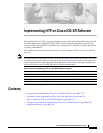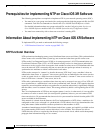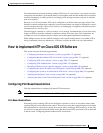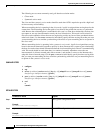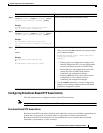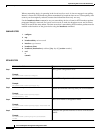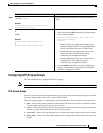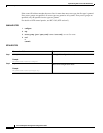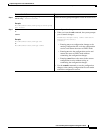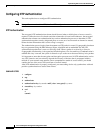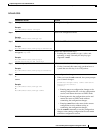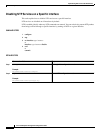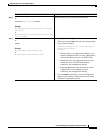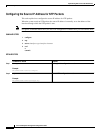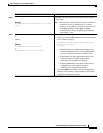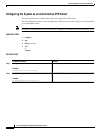
Implementing NTP on Cisco IOS XR Software
How to Implement NTP on Cisco IOS XR Software
SMC-172
Cisco IOS XR System Management Configuration Guide
The following are two most commonly used, poll-based association modes:
• Client mode
• Symmetric active mode
The client and the symmetric active modes should be used when NTP is required to provide a high level
of time accuracy and reliability.
When a networking device is operating in the client mode, it polls its assigned time serving hosts for the
current time. The networking device then picks a host from all the polled time servers to synchronize
with. Because the relationship that is established in this case is a client-host relationship, the host does
not capture or use any time information sent by the local client device. This mode is most suited for
file-server and workstation clients that are not required to provide any form of time synchronization to
other local clients. Use the server command to individually specify the time-serving hosts that you want
your networking device to consider synchronizing with and to set your networking device to operate in
the client mode.
When a networking device is operating in the symmetric active mode, it polls its assigned time-serving
hosts for the current time and it responds to polls by its hosts. Because this is a peer-to-peer relationship,
the host also retains time-related information about the local networking device that it is communicating
with. This mode should be used when there is a number of mutually redundant servers that are
interconnected via diverse network paths. Most stratum 1 and stratum 2 servers on the Internet today
adopt this form of network setup. Use the peer command to individually specify the time-serving hosts
that you want your networking device to consider synchronizing with and to set your networking device
to operate in the symmetric active mode.
SUMMARY STEPS
1. configure
2. ntp
3. server ip-address [version number] [key key-id] [minpoll interval] [maxpoll interval] [source
interface-type interface-instance] [prefer]
4. peer ip-address [version number] [key key-id] [minpoll interval] [maxpoll interval] [source
interface-type interface-instance] [prefer]
5. end
or
commit
DETAILED STEPS
Command or Action Purpose
Step 1
configure
Example:
RP/0/RP0/CPU0:router# configure
Enters global configuration mode.
Step 2
ntp
Example:
RP/0/RP0/CPU0:router(config)# ntp
Enters NTP configuration mode.



